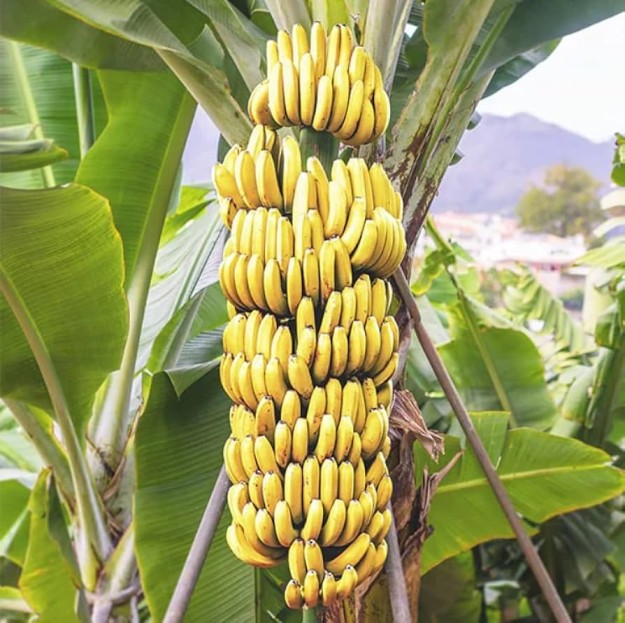Bananas, that ubiquitous tropical fruit adored for its sweetness and convenience, come with a peculiar twist – their gentle curve. Ever wondered why bananas are curved? In this exploration, we peel back the layers to uncover the fascinating reasons behind the curvature of this beloved fruit, delving into the biological, historical, and agricultural aspects that contribute to the unique shape of bananas.
1. Natural Tropism: Bending Towards the Light
Bananas, like many plants, exhibit positive phototropism, a phenomenon where they grow towards a light source. In the dense tropical rainforests where bananas originated, the canopy above provides limited sunlight. As banana clusters grow towards the light, the natural curvature allows them to maximize exposure to sunlight, optimizing photosynthesis for better fruit development.
2. Efficient Ripening
The curvature of bananas also facilitates an even ripening process. The bend in the fruit allows for better air circulation around each banana in a cluster. This promotes uniform ripening, ensuring that each fruit reaches its peak sweetness without relying on ethylene gas produced by other fruits.
3. Cultivation Practices
Historically, bananas were not the same curved fruits we recognize today. Wild bananas had larger seeds and were more straight. Through centuries of cultivation, selective breeding favored the development of the curved, seedless banana we know today. This evolution in cultivation practices has influenced the modern banana’s distinctive shape.
4. Transportation and Packaging
The curvature of bananas isn’t just a result of nature; it also serves practical purposes in transportation and packaging. The gentle arc allows bananas to fit snugly into crates, optimizing storage space and minimizing damage during transit. The curvature also enhances the structural integrity of the fruit, preventing bruising and preserving its quality.
5. Cultural Symbolism
Beyond its botanical attributes, the curved banana holds cultural symbolism. Its distinctive shape has become an iconic representation of tropical fruit, associated with leisure, exoticism, and a healthy lifestyle. The banana’s curve has even influenced art and popular culture, making it a recognizable symbol globally.
6. Versatility in Culinary Applications
The curvature of bananas is not merely symbolic; it also impacts their culinary applications. The natural curve allows for easier handling and slicing, making bananas a convenient addition to various dishes, from desserts and smoothies to savory recipes.
In the grand tapestry of nature, the curvature of bananas is a testament to the intricate dance between biology, history, and practicality. The gentle bend that defines this tropical fruit isn’t just a quirk of nature; it’s a culmination of evolutionary advantages, cultivation practices, and cultural symbolism that has shaped our relationship with bananas. So, the next time you enjoy a banana’s sweet embrace, savor the delightful mysteries woven into its curved form.

